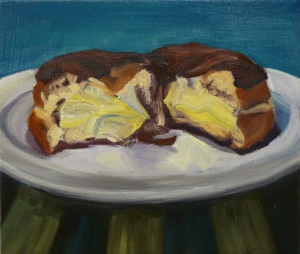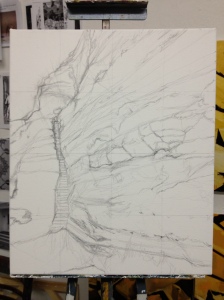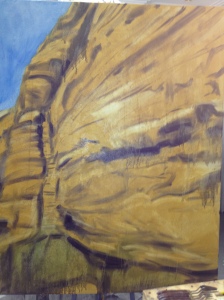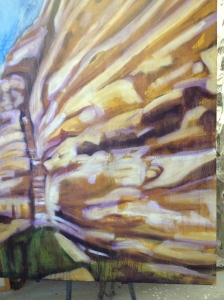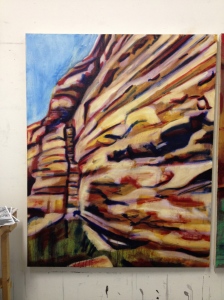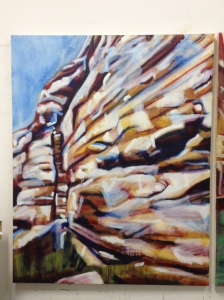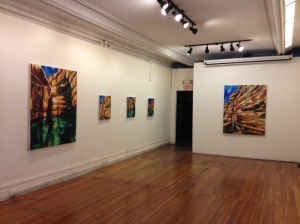Originally posted 04-23-2013
A transcription is when you take a master painting and draw from it to understand how it is made. It isn’t copying because you are not replicating it verbatim. Instead, you are distilling the image, taking from it what you want, and leaving the rest behind. It is a tool artists have used for centuries.
Drawing from another’s work is a great way to further your knowledge of painting. It helps you in understanding what the artist was thinking and how he or she was doing it. It helps you to understand the painting better, and thereby helps you, as an artist yourself, to bring the lessons you have learned into your own work.
That being said, transcriptions are dangerous. Yes, they are helpful, but they can also be a crutch. Don’t know what to do; make a transcription. The classical art school hang up. You might be learning about an artist’s process, but you aren’t necessarily learning about yourself as an artist. This brings us back to the definition of transcription. You are not making the transcription through the painter’s hand, but your own, yet you are still using their ideas. This crutch can prevent some from coming up with their own ideas, their own way of working out what to put on the canvas. But what about those that borrow?
Art also has a long tradition of borrowing from other artists. My favorite example is Edouard Manet’s Luncheon on the Grass. The scene of the men and women is taken from a Raphael painting that has since been lost, The Judgement of Paris. While for the informed art goer, they would recognize the reference, it is but that, a reference! Manet refers to the scene, but puts his own spin on it, making it modern and consequently controversial. When using the motif, he had his own ideas and his own agenda. He wasn’t trying to be Raphael; he could never be, but he could be Manet.
(Below are the two pieces I am referring to. Since the Raphael was lost, all we have, and Manet had, was an engraving after the painting done by Marcantonio Raimondi. The scene taken is located in the bottom right hand corner.)
In the olden days, people would apprentice in a master artist’s studio, they would spend years learning the tools of the craft until one day where they would submit master paintings of their own and be acknowledged as masters themselves. They would then open their own studios and workshops, and the cycle would begin again.
Today, we have college and graduate programs. Instead of submitting a master piece at the Salon, you spend two or three years earning your Master of Fine Arts degree at a accredited university.
Recently, I had a critique with one of my professors. I have been painting still lifes of doughnuts (in depth post to follow). She advised that I look to other still life painters and try to imagine what they might do. I was taken aback by this suggestion. One of my biggest obstacles in this body of work was my paintings referring too much to Wayne Thiebaud, an artist I greatly admire, who is well known for his paintings of cakes, ice cream, and other delectables, as well as other artists paintings cakes or doughnuts.
As a young aspiring artist, I look up to Thiebaud, but with my current subject matter, the doughnut, I do not wish to stand in his shadow. It is okay if people ask me about him, and whether or not I look at his work (which I do!), but I always breathe a sigh of relief when they tell me that they look nothing like his paintings.
My goal as an artist is not to sit in my studio pondering what someone else would do (I am not Thiebaud, I will never be Thiebaud, nor would I ever want to be him). Instead, I should take the knowledge I have from my years of study, from looking at the paintings I have seen, all the artists I admire, all the artists I do not admire, and all the transcriptions I have done, and to find my unique, individual voice as a painter, and, then, do all I can to hold onto it. In the end, that’s what will get me somewhere in this crazy profession, my individuality and my own spin on the world.
(Immediately below is a Wayne Thiebaud painting. Below that is an Ashlee Rubinstein original.)



